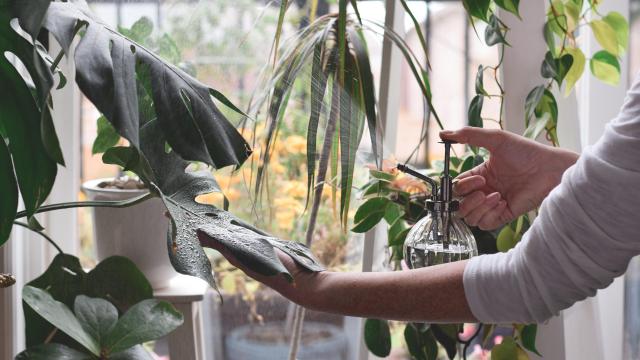One of the trickiest parts about houseplants is the fact that you’re trying to keep different plants alive inside a single climate (your home) that are native to a variety of climates. For example, you may have a fern native to the Amazon rainforest in the same room as a cactus found in Arizona. Succulents aside, even plants that didn’t originate in the rainforest tend to enjoy a bit of humidity.
Providing your plants with adequate levels of humidity is easier said than done — especially indoors during the winter — but not impossible. Here are a few ways to give your houseplants the humidity some of them need to thrive indoors.
Group your plants
Even if you don’t do anything else, arranging your houseplants in groups can help increase the humidity in the air around them — especially when placed near a window. This is because water evaporates from their soil, and plants release vapors through “pores” on their leaves (the process of transpiration). To give them another boost, place open containers of water around the plants.
Use a humidifier
Sure, you could get really scientific about it and use a hygrometer to measure the humidity levels in the air, then use a humidifier to make sure a room’s air is properly hydrated (according to the specific needs of the plant). Or, you could place a humidifier in the room and let it do its thing. Either way, it’ll help the plants, and probably make the humans residing there more comfortable, too.
Read more: Do houseplants actually filter your air?
Put them in the bathroom
Plants that love humidity tend to do well in bathrooms, thanks to the constant flow and vaporisation of water from the sink, shower, tub, toilet, etc.
Mist them daily
Giving your plants a daily spritz with a spray bottle isn’t going to significantly increase the humidity levels in a room, but it will boost it for a few hours. If you can only mist once a day, do it in the morning to ensure that any excess moisture has the chance to evaporate throughout the day. That reduces the risks that come with plants being damp when it gets cooler at night, which can include developing a fungal or bacterial disease.

Leave a Reply
You must be logged in to post a comment.